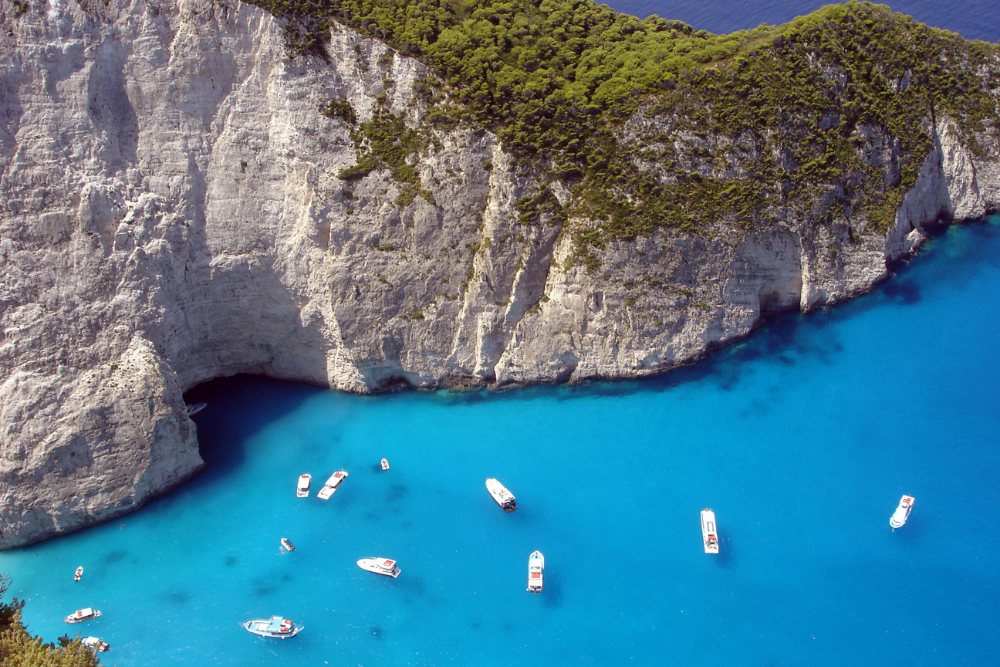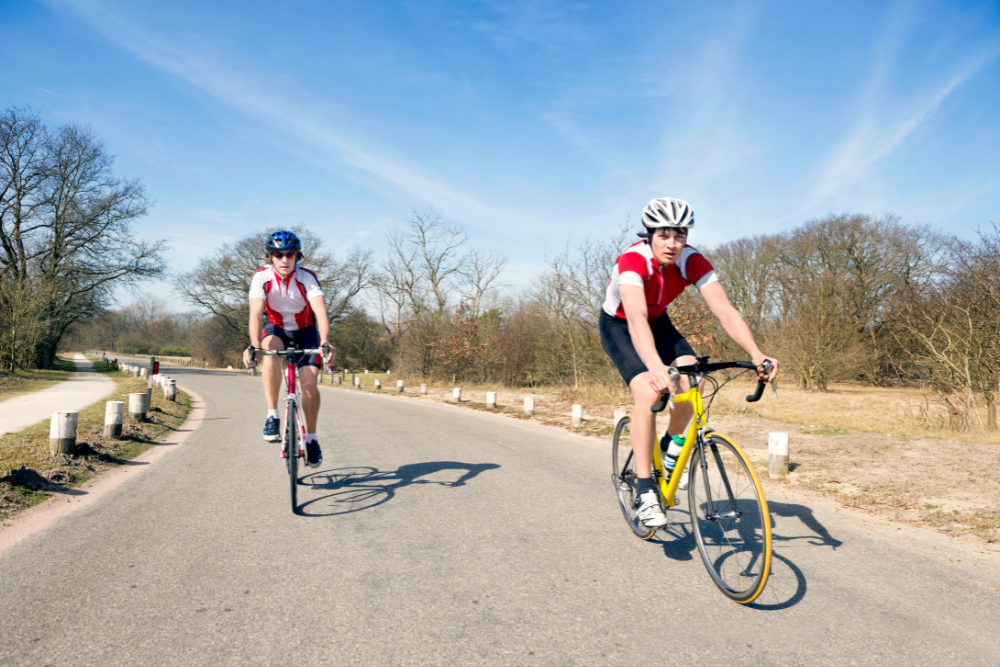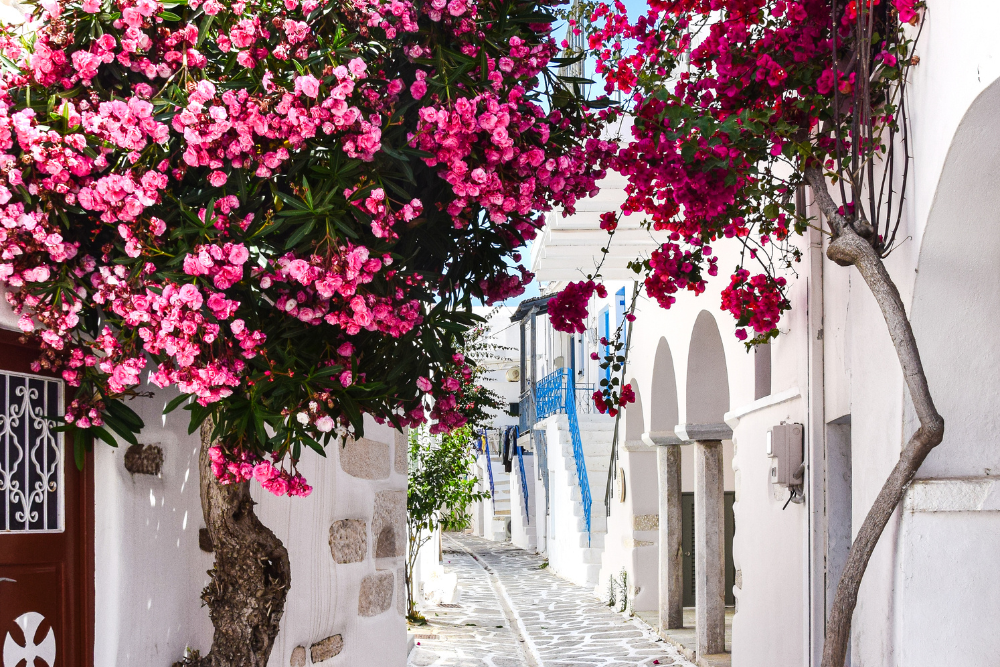Cycling through the Greek Islands is one of the most exhilarating and rewarding ways to explore the country’s stunning landscapes, crystal-clear waters, and charming villages. Whether you’re a seasoned cyclist or just looking for a leisurely way to experience the Greek Islands, cycling offers an opportunity to immerse yourself in the culture, history, and natural beauty of these iconic destinations. This complete guide will help you plan the perfect cycling adventure across Greece’s islands, with tips on the best routes, essential gear, and practical advice.
Why Cycle Through the Greek Islands?

Cycling through the Greek Islands allows you to experience the beauty and tranquility of the country at your own pace. Unlike the hustle and bustle of tourist hotspots, cycling offers the chance to discover hidden gems and secluded beaches, picturesque villages, and ancient ruins. Many Greek islands have well-maintained roads and paths, making it a feasible and enjoyable activity for all levels of cyclists.
Here are some of the benefits of cycling in Greece:
- Scenic Views: Cycling allows you to experience the islands’ breathtaking landscapes—vineyards, olive groves, rugged mountains, and coastline—all from the saddle of your bike.
- Freedom and Flexibility: Cycling gives you the freedom to explore at your own pace and access remote areas that are hard to reach by car or public transport.
- Healthy Travel: It’s an active way to travel, offering physical benefits and a chance to truly connect with the environment.
Best Greek Islands for Cycling

Greece’s islands vary in terrain, but many are ideal for cycling, offering diverse landscapes and cycling-friendly infrastructure. Here are some of the best islands to explore by bike:
1. Naxos
As the largest island in the Cyclades, Naxos offers an array of cycling routes for all levels, from flat coastal roads to more challenging inland climbs. The island is known for its lush countryside, ancient ruins, and traditional villages. Popular cycling routes include the road from Naxos Town to the Temple of Demeter, as well as the scenic route through the Filoti and Apiranthos villages. The island also has well-maintained cycling paths along its beaches, making it perfect for both leisure and more serious cyclists.
2. Crete
Crete is an excellent choice for adventurous cyclists, offering diverse landscapes ranging from mountainous terrain to seaside paths. The island’s winding roads, especially in the White Mountains and the Samaria Gorge, provide an exciting challenge for more experienced cyclists. For beginners or families, the flatter coastal roads around Chania and Heraklion offer scenic and easy rides. Crete’s unique blend of ancient ruins, picturesque villages, and natural beauty makes it an unforgettable cycling destination.
3. Rhodes
Rhodes offers a mix of flat coastal routes and more challenging inland terrain. Cycling through the medieval Old Town of Rhodes, a UNESCO World Heritage site, is a highlight, as is cycling to the ancient city of Lindos with its stunning Acropolis. The roads on the island are well-paved and traffic is generally light, making it safe for cyclists. If you’re seeking a longer route, try the Rhodes to Kamiros ride, which offers breathtaking coastal views and the opportunity to stop at ancient ruins.
4. Santorini
Santorini may be known for its cliffs and dramatic landscapes, but it also offers fantastic cycling routes. While the island is not as flat as some others, the smaller size of Santorini makes it ideal for a day trip by bike. You can ride from Fira to Oia, taking in the stunning caldera views along the way. The route is mostly downhill with some uphill sections, so it’s perfect for cyclists who enjoy a challenge. Don’t forget to explore the island’s vineyards and charming villages off the beaten path.
5. Corfu
Corfu offers lush greenery, tranquil coastal roads, and charming villages, making it an ideal destination for a leisurely cycling holiday. The island has a combination of flat coastal roads and gently sloping hills. A popular route is along the Corfu Trail, which stretches from the southern tip of the island to the northern coast. Cycling through Corfu Town, a UNESCO World Heritage site, is also a must, with its Venetian architecture and picturesque squares. Corfu’s mild climate makes it a great year-round destination for cyclists.
6. Andros
Andros, a less-touristy island in the Cyclades, is a hidden gem for cycling enthusiasts. The island is known for its well-marked cycling routes that pass through rolling hills, traditional stone villages, and ancient ruins. With varied terrain, from coastal routes to inland mountain trails, Andros offers something for cyclists of all levels. The Chora to Korthi Bay ride is a popular route that takes you through olive groves, valleys, and scenic landscapes.
Cycling Tips for the Greek Islands
- Best Time to Cycle: The best time to cycle in Greece is during the spring (April to June) and autumn (September to October). The weather is mild, and the islands are less crowded. Avoid cycling in the peak summer months (July and August) as the temperatures can soar, making it uncomfortable and even dangerous to ride in the midday heat.
- Road Conditions: Greek islands generally have good road conditions, especially in the more tourist-friendly areas. However, some of the more remote islands or villages may have rougher roads, so it’s essential to be prepared for different terrains. Road signs and markings can sometimes be sparse, so it’s advisable to use a GPS or a cycling app for navigation.
- Renting a Bike: Most major Greek islands have bike rental shops where you can rent both traditional bicycles and electric bikes. If you prefer to travel with your own bike, check with your airline about bike transport options. When renting a bike, make sure it’s in good condition and choose a suitable type for the terrain you plan to explore.
- Packing Essentials: Bring a good quality helmet, water bottle, sunscreen, and a first-aid kit. If you’re planning to cycle for an extended period, you may also want to pack some basic bike repair tools, such as tire patches and a pump. Additionally, consider wearing lightweight, moisture-wicking clothing to stay comfortable while cycling in the warmer months.
- Safety: Always wear a helmet and be aware of local traffic laws. While Greek islands are generally cyclist-friendly, traffic can be unpredictable, particularly in more populated areas. Stick to bike lanes when available, and be extra cautious when cycling on coastal roads with sharp bends or narrow lanes.
Cycling Tours and Group Rides

If you prefer a guided experience, there are plenty of cycling tours available that will take you on scenic routes, offering insider knowledge about the islands’ history, culture, and local life. These tours often include bike rental, a guide, and a support vehicle for longer trips. Many tour operators also offer customized itineraries for couples, families, or solo travelers, allowing you to explore the best of the islands in a more relaxed and enjoyable way.
Where to Stay While Cycling in Greece
Many hotels and guesthouses on Greek islands cater to cyclists, offering secure bike storage, repair services, and even tailored packages for cycling enthusiasts. Look for accommodations that are located near cycling routes or offer easy access to bike rentals. Budget options like hostels and Airbnbs are also available, and many of these offer a more authentic and local experience.
Conclusion
Cycling through the Greek Islands offers an exciting and immersive way to experience the country’s rich culture, beautiful landscapes, and historical sites. Whether you’re cycling along the beaches of Naxos, through the mountains of Crete, or past the vineyards of Santorini, there’s something for every cyclist in Greece. With a little preparation, a sense of adventure, and a bike ready to go, your cycling trip through the Greek Islands will surely be an unforgettable journey.












